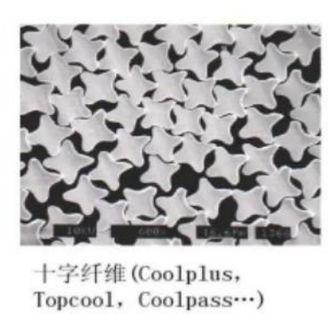Moisture wicking textile products are a kind of functional textile products that have developed rapidly in recent years, especially in sports, leisure, outdoor and travel apparel products, which have become the highlight of guiding the market and consumption. Moisture wicking fabric may seem complicated, but it is not a completely high-tech problem. It can be designed from the aspects of Moisture wicking fibers and fabric structure. In order to achieve the relevant functions simply and quickly, the moisture wicking fabrics on the market are mostly thin fabrics, and the fabrics have single-sided fabrics, double-sided fabrics or multi-layer structural fabrics.

Moisture wicking fibre
The moisture wicking performance of fiber depends on its chemical composition and physical structure. The gaseous water evaporating from the skin surface is first absorbed by the fiber material (i.e. hygroscopic), and then dehumidified through the material surface. The capillary effect of the liquid water on the skin surface caused by the pores (capillaries, micro-pores, grooves) inside the fibers and the Spaces between the fibers makes the water adsorption, diffusion and evaporation on the surface of the materials (i.e., de-humidification).
The form of fiber moisture conduction can be divided into two cases: “infiltration” & “ wicking” ,the former refers to the liquid phase water conduction along the surface of single fiber or fiber aggregate in the form of infiltration, the latter refers to the capillary core absorption of liquid in the fiber collection or single fiber hole. Among them, infiltration is the basis and premise of wick aspiration. Fiber infiltration can be characterized by measuring contact Angle, infiltration force, spreading speed, etc. The core absorption of fiber can be characterized by the core absorption height, core absorption speed and other indicators. The results of the two actions lead to the migration of water, the former is mainly related to the chemical composition of the fiber macromolecules, the latter is related to the physical structure of the fiber dimension.
Moisture wicking fiber generally has a high specific surface area, the surface has a large number of holes or grooves, its cross section is generally special shape, the use of capillary effect, so that the fiber can quickly absorb skin surface moisture and sweat, through diffusion, transfer to the outer layer.

The development of moisture wicking fibre
The first products to introduce the concept of moisture wicking and quick drying in China are functional textile products developed based on the characteristics of natural fibers. In order to improve the discomfort caused by the characteristics of cotton fiber easy to absorb moisture but not easy to dry, people began to consider whether it can be through the change of yarn or fabric structure, or even through the way of finishing to speed up the conduction and evaporation of water, so as to achieve the effect of moisture absorption and rapid drying, which was once popular polyester cotton products is a typical example. Later, with the development of fiber technology, moist-guiding and quick-drying products based on differentiated synthetic fibers as the main raw materials have begun to enter the market.
Chemical moisture wicking fiber is mainly used to shape the fiber cross section (Y shape, cross shape, W shape and bone shape, etc.) to form grooves on the fiber surface. With the help of the core hygroscopic moisture conduction structure of the grooves, it rapidly absorbs the moisture and sweat of the skin surface, and is instantly discharged from the body. Keeps skin dry and cool.